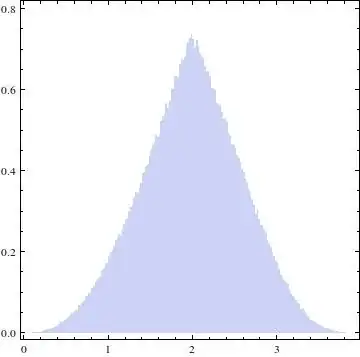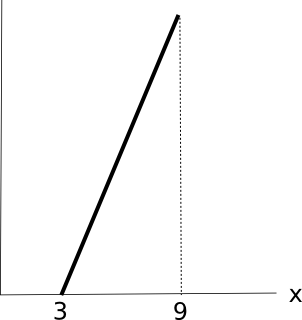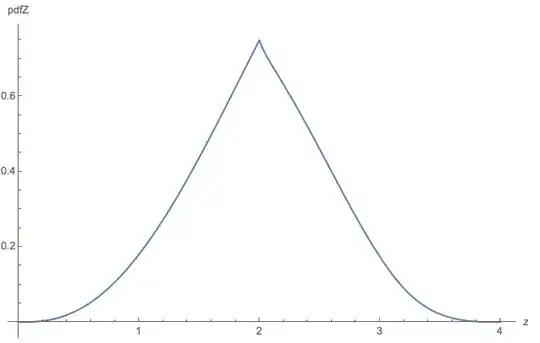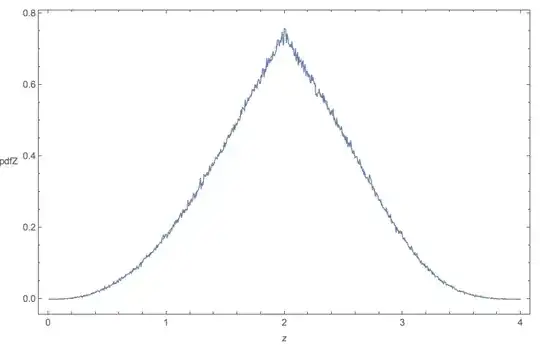This is a direct continuation of my recent question. The thing that I actually want to get is the distribution of $a+d+\sqrt{(a-d)^2+4bc}$, where $a,b,c,d$ are uniform in $[0,1]$. Now, the distribution of $(a-d)^2+4bc$ was successfully computed in the mentioned thread, and let's call it $h(x)$. The distribution of $\sqrt{(a-d)^2+4bc}$ is simply $h(x^2)\cdot 2x$. The last step would be to compute the distribution of the sum of $X=a+d$ and $Y=\sqrt{(a-d)^2+4bc}$ in a way similar to the previous one, but $X$ and $Y$ are not independent, and now I'm stuck and don't even know where to start with.
It may be useful to note that $\sqrt{(a-d)^2+4bc}=\sqrt{(a+d)^2-4(ad-bc)}$ and in the latter the components under the root (i.e., $X^2=(a+d)^2$ and $W=-4(ad-bc)$) are easy to calculate. Then, I'm interested in the distribution of $X+\sqrt{X^2+W}$, knowing the distributions of $X$ and $\sqrt{X^2+W}$.
I don't see any useful change of variables. I thought about using conditional probability, but how can I find $f(\sqrt{X^2+W}\Big|X)$? I might be too much ahead and maybe have to go back a few steps.
Is it even possible to calculate something like this?
The resulting distribution should look like this:

EDIT: The accepted answer gives the solution I was looking for, however, I'm still curious how to derive it analytically. I mean, in my previous question the CDF was given as an integral:
$\int_0^4 F(\delta-y)g(y)dy$
with $F$ and $g$ given by simple functions. Theoretically, that could be integrated using pen and paper. Of course using software is natural. However, I'm still curious how to give a closed-form answer here. wolfies answer rings a bell, but... A convolution of three pdfs of such a (relatively) complicated function?






